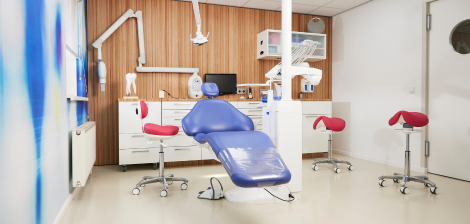There are approximately 12,400 new head and neck cancer diagnoses each year (Cancer Research UK), with 3637 people in the UK dying to the condition in 2023. As dental professionals, we are best suited to screen and raise awareness of this condition.
Before we start...
Regular contact with patients, appointments and attendance are a critical part of screening, so it’s important to keep patients engaged. We’ve written an article filled with tips on patient-practitioner communication, in the hopes of providing helpful advice for situations such as this.
Also in the interests of patient communication, we’ve written a brief breakdown on the risks of poor oral hygiene. If you want to stay up to date on other oral health events, see our article on National Smile Month, and keep an eye on our news and articles section for more articles. Finally, read our article on medical emergencies in the practice to stay up to date with guidance on medical emergencies.
Causes and Risk Factors for Oral Cancer
Oral cancer has several risk factors. It’s important to ensure that your patient is aware of the associated risks of behaviours such as smoking.
Risk Factors:
- Tobacco & Alcohol use: Tobacco increases an oral cancer risk by 10 times and alcohol increases the risk by 4. Combined, this makes for an increase of 40% in a person’s risk of developing oral cancer.
- Chewing betel quid with tobacco
- Human papillomavirus (HPV) infection
- Age: Oral cancer is more common in people over 50, with around 78% of cases occurring in the over 55 group.
- Gender: Men are about twice as likely to develop oral cancer than women, according to the MCF.
- Diet: A Poor diet which is low in fruits and vegetables may increase the risk of oral cancer.
- Social deprivation: Combined with diet, this risk factor is linked to a third of all cancer cases according to the MCF.
- Sun exposure: Prolonged exposure to UV radiation without adequate sun protection increases the risk of lip cancer.
What to look out for -
Oral cancer has many potential presentations, some of them include:
- A non-healing ulcer present for more than 2 weeks.
- Persistent red (erythroplakia) or white patches (leukoplakia).
- Difficulty swallowing (dysphagia) or chewing.
- Persistent hoarseness or sore throat.
- Numbness or altered sensation of the tongue or lips.
- Mobile teeth with no obvious dental cause.
- Non-healing extraction socket.
Screening can help you to detect oral cancer early and improve a patient’s chances of survival and quality of life. A study by the Cancer Research UK Cancer Survival Group, shows that early diagnosis increased the likelihood of a patients’ survival from 50% to 90%. Please find the study in the resources section of this page.
Self-examination
Whilst screening is an essential part of detecting mouth cancer early, some patients might also appreciate the knowledge and resources to monitor for signs of oral cancer:
1 Face – Check your face for unusual swelling or changes. Pay particular attention to the skin and any moles. Turn your head side to side and gently stretch the skin when you can, so you can see your facial muscles more clearly
2 Neck – Feel under your jaw using the ball of your fingers, does the large muscle under your jaw feel even? Inspect for potential swelling or changes.
3 Lips – Using your middle finger and your index finger, feel the inside of your mouth, pulling your upper lip upwards, and your lower lip downwards. Are there sores, or patches of unusual colour?
4 Gums – Using your thumb and forefinger, check around your gums for changes, or anything unusual.
5 Cheeks – Open your mouth and gently pull one of your cheeks outwards, inspect and feel with your finger. Look for any unusual changes, white patches, or sore areas.
6 Tongue – Gently pull your tongue out and look at both sides for swelling, ulcers, or changes in colour.
7 Mouth floor and roof - Tilt your head and inspect with your finger. You’re looking for rough patches, ulcers, and changes in colour or texture. Once you’re done inspecting the roof of your mouth, lift up your tongue and follow the same inspection for the floor.
The above list is an examination from the Mouth Cancer Foundation, more resources and a downloadable poster can be found here.
Conclusion – Early detection and prevention is key when dealing with Oral Cancer. It is vital that your patients, particularly those at risk, undergo regular screening, and are aware of the causes and symptoms of head, neck, and mouth cancers. Early referral to a mouth cancer unit can also make a instrumental difference to a patient’s quality of life and their chance of survival. Remember, if you’re unsure – REFER!
In tribute to Dr Philip Lewis. Ex-Mouth Cancer Foundation president, respected by his peers and loved by many.
Resources -
- Muller P, Belot A, Morris M, Rachet B, Cancer Research UK Cancer Survival Group, London School of Hygiene and Tropical Medicine. Net survival and the probability of cancer death from rare cancers. Available from http://csg.lshtm.ac.uk/rare-cancers/ (Accessed November 2024).



